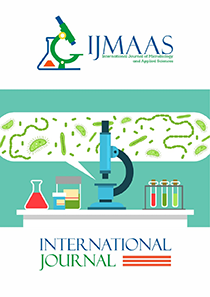Antibiogram of Bacteria and Fungi Associated with Local Pedicure Equipment Used in Port Harcourt Metropolis
Vol 3, Issue 1, 2024
KEYWORDS
Traditional pedicure, feet and toenails, scissors and razors, microorganisms, antibiotic resistance.
Abstract
Local or traditional pedicure is a personal or unprofessional cosmetic treatment of the feet and toenails in Nigeria. Local pedicure is fairly cheap and unlike salon pedicures though posing more risk on its patrons. Local pedicure equipment like scissors and razors has been reported as sources of varieties of infections and diseases. This study assesses the presence of microorganisms in local pedicure equipment used in Port Harcourt. Swab samples were aseptically collected from the cutting edge of scissors and razors at three different locations. Organisms were enumerated and identified using standard microbiological techniques. Kirby Bauer disc method was used for antibiotic sensitivity. Total heterotrophic bacterial counts ranged from 3.39±1.58 to 5.05±3.17×106CFU/ml for Razor and Scissor 1 while total fungal counts ranged from 3.10±2.68 to 4.30±2.82×105CFU/ml for Razor and Scissor 2 respectively with no significant difference (p≥0.05). Bacterial isolates identified and their occurrence (%) were; Escherichia coli (7.1%), Pseudomonas sp. (7.1%), Staphylococcus sp. (64.4%), Bacillus sp. (21.4%). While fungal isolates were; Candida albicans (28.6%), Trichophyton sp. (14.3%), Penicillium sp. (14.3%), Mucor sp. (28.6%), Aspergillus sp (14.2%). Sensitivity results showed that Staphylococcus sp. was more susceptible to Ampiclox, Streptomycin and Rifampicin and showed more resistance to Zinnacef. Amoxicilin and Rocephin. Pseudomonas sp. was more susceptible to Tarvid, Reflacin, Gentamycin, Ciprofloxacin, Septrin, Steptomycin, and Amplicin but was resistant to Nalidixic acid and Ceporex. Bacillus sp. was more susceptible to Levofloxacin, Rifampicin, Streptomycin and Gentamicin, and resistant to Amoxicilin, Septrin, Erythromycin and Reflacin. Escherichia coli was susceptible to Tarvid, Gentamicin and was resistant to Ceporex, Reflacin and Augmentin. The presence of these antibiotic resistant organisms on pedicure equipment poses public health risks. It is recommended to properly sanitize and sterilize these equipments before and after use to prevent a public health outbreak.
Current: Vol 3, Issue 1, 2024

Call for papers
The International Journal of Microbiology and Applied Sciences warmly welcome your valuable articles for publication.
